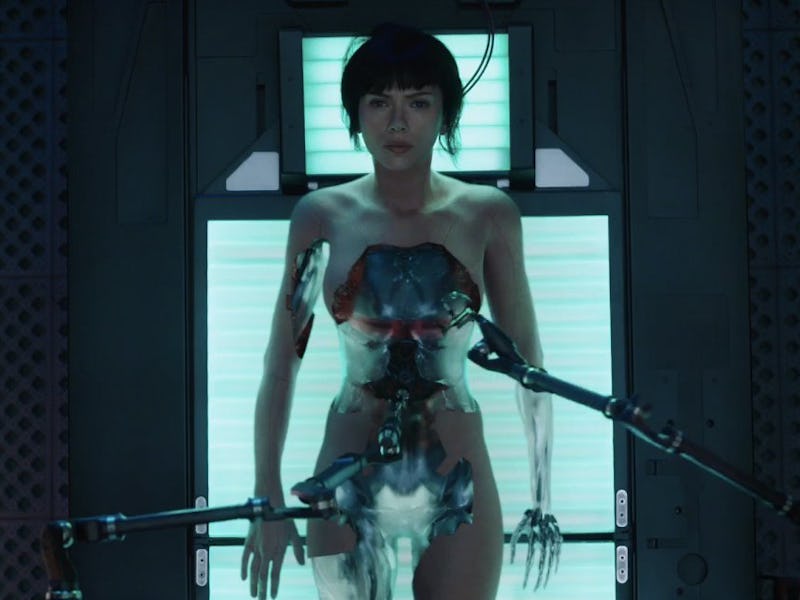The Science Behind the Cyberbrain in 'Ghost in the Shell'
When you stick an implant into your head, does your brain cease to be yours?

At the heart of both the original manga and the live-action film adaptation of Ghost in the Shell is the “cyberbrain,” an aggressive version of what we currently identify as a brain-computer interface (BCI), a way to wire a brain to an external device in order to facilitate a user’s direct control of a machine using only their thoughts.
In real life, a BCI could translate into better sensory capabilities, enhanced motor coordination, the ability to tap into external and digital sources of information, and interfacing with other networks and people who are also similarly connected.
In Ghost in the Shell, the BCI (here, the cyberbrain) manifests as an implant in the brain that connects individuals both physically and virtually to other platforms. This can include diagnostic tools that scan the body and brain for physiological anomalies and problems; other integrated devices, such as artificial eyes that can allow for multiple filters of vision or a communications link that lets people talk through what is basically digital telepathy; the internal networks and operating systems of other androids; and external networks that connect whole communities together with other digital and physical infrastructure.
But this also means the individual’s own cyberbrain is accessible to external forces. In other words, your cyberbrain can be hacked in the Ghost in the Shell universe, removing, adding, or even distorting memories. More cyberization means potential access to somatic and autonomic elements — meaning greater control of one’s physiological processes and senses like the eyes and ears.
Real-world scientists are already pursuing their own versions of the cyberbrain by developing various types of new technologies that can facilitate a machine-brain interaction. The development of a BCI is a real, concerted effort among many different groups.
Probably the most famous of these projects is the neural lace being developed by the Elon Musk-backed biotech company Neuralink. The description of the idea is deceptively simple, and perhaps shrouds the sheer audacity of what the neural lace is supposed to be — a brain implant that can connect any person’s mind to a cloud to facilitate super-intelligence in human beings. Neuralink’s initial goal is to focus on medical applications to help those afflicted by neurological disorders and degenerative brain conditions.
Musk’s startup is expressly interested in using the neural lace to allow humans to control A.I. and robotic systems through pure mental commands. Musk and his colleagues want to essentially tear down the divisions between human and machine — just as a cyberbrain would.
Neuralink has already tested their device on mice, but the company is looking to test it in humans as soon as it’s proven safe enough. The device doesn’t actually go straight into the brain, instead sitting outside of the blood-brain barrier. This means it won’t be as sensitive as a directly inserted brain implant, but it can still interact with and interface with neurons embedded in the brain.
When it comes to outright controlling other devices using the brain, scientists have already proved the feasibility behind this incredible achievement — usually in the form of robotic prosthetics designed to replace damaged body parts. More recently, Korean scientists developed a “cyborg system” fitted on the back of turtles’ shells and connected to a BCI system that allowed people to control the animal’s directions and motions by a pointed light source.
Of course, while the scientific and technological achievements of these projects are incredible, they do very little to assuage people’s fears of being hacked and controlled like some characters are in the world of Ghost in the Shell. A Pew Research Center study last year demonstrated that Americans are terrified that the prospect of technological implants will basically strip people of their humanity and turn them into controllable robots. And thus far, Musk and others haven’t been able to demonstrate that their technologies, taken to an extreme, won’t be used for such nefarious purposes.
Nevertheless, the future of brain implants is certainly on its way. The cyberbrain of Ghost in the Shell is more than just a possible future — it’s going to happen. The only question is how far we’ll go augment the advantages of such a meld of human and machine systems and mitigate the downsides.